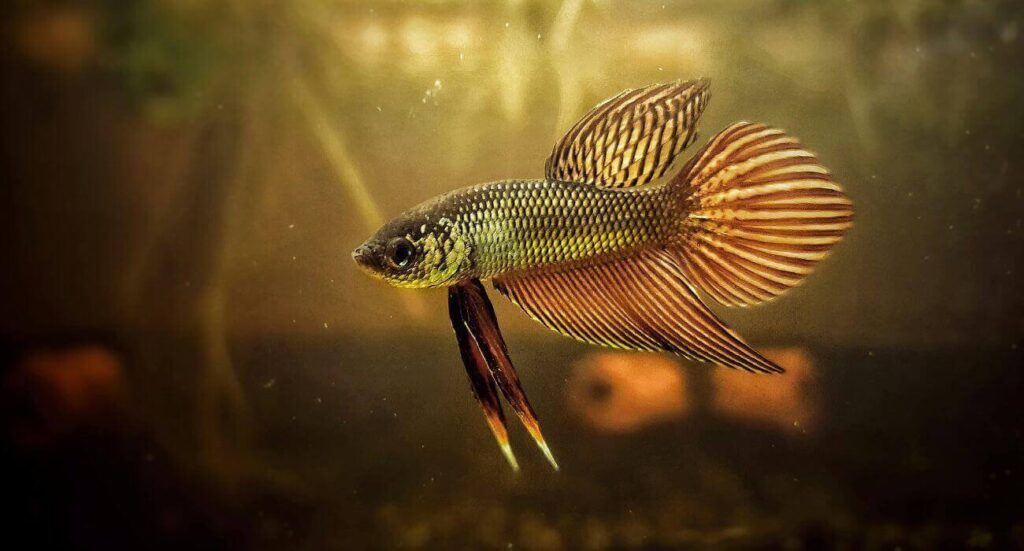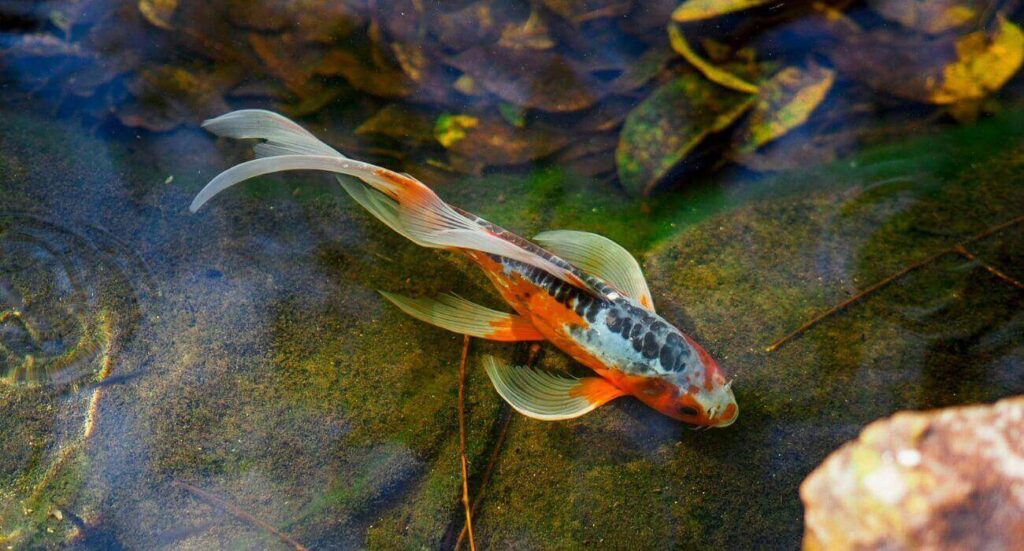As an Amazon Associate, I earn from qualifying purchases
Yes, fish tails can grow back if they are not seriously damaged. The regeneration process depends on the species and the extent of the injury.
Fish are remarkable creatures capable of regenerating lost tails and fins, a form of recovery that fascinates aquarists and marine biologists alike. Tail regrowth is a natural phenomenon observed in many fish species, enabling them to survive in the wild despite encounters with predators, rough conditions, or human interference.
This adaptive trait ensures essential mobility and balance, critical for feeding and avoiding danger. The regenerative process involves complex biological mechanisms that can vary from one fish species to another, reflecting the diverse and resilient nature of aquatic life. Understanding how fish recuperate from such injuries not only sheds light on their biology but also highlights their resilience and the importance of aquatic ecosystem conservation.
Fish Tail Regeneration: Myth Or Reality?
Fin-tastic tails of fish are more than just a means to swim. They can tell tales of recovery and resilience too. Are those stories of fish regrowing their tails just fisherman tales or do they hold a drop of truth? Dive into the world of fish tail regeneration and discover what’s myth and what’s reality.
Common Misconceptions About Fish Tail Growth
- Fish Can’t Regrow Tails: Many assume once a tail is gone, it’s gone for good. This isn’t always true.
- All Fish Regenerate Equally: Not all fish are equal in their regenerative powers. Some can, some struggle.
- Tails Regrow Overnight: Regrowth takes time, often weeks or months, not just a quick sleep.
Real Cases Of Tail Regeneration In Aquatic Life
Explore these verified instances where fish have surprised us with their regenerative capabilities.
| Fish Species | Regeneration Time | Regrowth Capacity |
|---|---|---|
| Zebrafish | 3-4 weeks | Can regrow entire tails |
| Goldfish | Varies | Partial to full, depending on damage |
| Cichlids | 1-2 months | Mostly partial regrowth |
This table reveals awe-inspiring capabilities, confirming regeneration in fish is indeed a reality, not just a myth.
Understanding Fin Damage And Loss

Understanding Fin Damage and Loss is crucial for fish owners. A fish’s tail and fins are vital for swimming and balance in water. But what happens when they get hurt? Can they grow back?
Types Of Tail Injuries In Fish
Fish can suffer from various tail injuries. Identifying the type of injury is the first step to treatment:
- Nips and Bites: When fish nip at each other.
- Tears: Can happen when fish brush against sharp objects.
- Rot: An infection that eats away at the tail.
Common Causes Of Fin Damage In Aquatic Environments
There are many reasons fish might hurt their tails:
| Cause | Description |
|---|---|
| Aggression | Fish attacking each other can lead to injuries. |
| Poor Water Quality | Bad water can cause diseases like fin rot. |
| Sharp Decorations | Sharp edges in tanks can cut fish tails. |
Preventing these injuries involves keeping a safe, clean habitat for your fish. Understanding these causes helps maintain your fish’s health and avoid tail damage.
The Science Behind Tail Regrowth
The fascination with how fish can seemingly repair their tails has captured the curiosity of many. This remarkable ability isn’t magic; it’s a complex biological feat. Understanding the science behind tail regrowth in fish unveils an intricate world of cellular regeneration. Let’s dive into the biological processes that give fish their renowned regenerative abilities.
Biological Processes Enabling Regrowth
Fish exhibit a remarkable capability to regrow lost or damaged tails. This regrowth process involves several stages: wound healing, tissue formation, and growth of new structures. Initially, cells near the wounded area react to damage, forming a protective clot. A special tissue, called blastema, then forms, functioning as a pool of stem cells. These cells have the unique ability to develop into various cell types, refurbishing the lost tail.
- Wound healing: a rapid response to prevent infection.
- Blastema formation: cells collect, paving the way for new growth.
- Growth and patterning: cells differentiate and organize into the proper structure.
Cellular Regeneration In Fish: A Closer Look
How do these cells actually form new tail tissue? Cell division plays a crucial part, with the blastema cells multiplying rapidly. As new cells accrue, they gradually take on specialized functions. This process is orchestrated by a symphony of genetic signals that guide cells to form muscles, bones, and fins.
The table below highlights the key players in this process:
| Component | Role in Regeneration |
|---|---|
| Blastema | Source of regenerative cells |
| Genetic signals | Directs the formation of specific tissues |
| Regenerative cells | Transform into new tail structures |
Each cell type knows its role, moving and shaping the growing tail. Over time, the tail’s complex architecture—the nerves, blood vessels, and scales—reappears. Remarkably, the tail regains not just form, but function. Fish rely on their tails for propulsion and maneuvering, making prompt and precise regrowth essential for survival.
Species-specific Regeneration Capabilities

Some fish can do a fantastic thing. Their tails can grow back. This is called regeneration. Not all fish can do this. It depends on what type of fish they are.
Fish Species Known For Regenerating Tails
Many fish amaze us with their ability to heal. Zebrafish stand out. They can completely grow their tails back. Goldfish and bettas can also heal their tails, but it takes time. The mollies are good at this too.
- Zebrafish: Fast healers, tail returns in weeks
- Goldfish: Slow but possible, need good water
- Bettas: Can heal if water is clean
- Mollies: Good regeneration, avoid tail nipping
Contrasting Regenerative Abilities Across Species
Different fish have different healing powers. Some grow tails fast. Others take a long time. Some cannot grow their tails back at all.
| Fish Type | Regeneration Speed | Full Regrowth |
|---|---|---|
| Zebrafish | Quick | Yes |
| Goldfish | Slow | Mostly |
| Bettas | Variable | Possible |
| Sharks | None | No |
For example, zebrafish heal quickly. In contrast, sharks cannot grow their tails back. This shows how different fish can be. It’s important to keep fish safe so they do not hurt their tails.
Factors Affecting Fin Regeneration
When a fish suffers an injury, such as a damaged tail, its ability to heal and regrow the fin is quite remarkable. Yet, this process, known as fin regeneration, hinges on several factors. Understanding these can help ensure the health and recovery of our aquatic friends. Let’s dive into the specifics that play a crucial role in the regeneration of fish tails.
Influence Of Water Conditions On Regeneration
The water in which a fish lives is like the air we breathe. Optimal water quality greatly aids in fin regeneration. To promote healing, keep an eye out for these water conditions:
- Temperature: Stable water temperatures support consistent healing.
- pH Level: A balanced pH level prevents stress on the fish’s body.
- Cleanliness: Regular tank maintenance removes harmful toxins.
Toxic substances such as ammonia and nitrite should be at zero levels. Adequate filtration systems and frequent water changes contribute to a safe environment for tail regrowth.
The Role Of Nutrition In Tail Growth
Just as a balanced diet is fundamental for humans, proper nutrition is essential for fish healing. A nutritious diet ensures the following:
- Protein: Serves as the building block for new fin tissue.
- Vitamins: Especially A and E, aid in tissue repair.
- Omega-3 Fatty Acids: Help reduce inflammation during healing.
Offer a variety of high-quality foods, such as live feed, pellets, and frozen diets. Foods rich in specific nutrients can enhance fin regeneration and boost overall health.
Impact Of Human Intervention On Regeneration
Nature has gifted fish with an amazing ability to heal. Fins and tails can grow back after injury. But human actions impact this regeneration process. Let’s explore how human intervention plays a role.
Effects Of Pollution On Fish Regrowth
Water pollution changes fish habitats. When harmful chemicals enter the water, fish struggle to survive. These chemicals can slow down the growth of new tails and fins.
Pollution comes from many places, like factories and cars. It can also include unwanted trash that harms sea life.
Toxic substances can harm fish cells. Regrowing tails or fins gets harder. A clean environment is vital for fish to heal properly.
The Role Of Aquarium Care In Regeneration
- Good tank conditions help fin regrowth.
- Clean water keeps fish healthy.
- Regular checks stop diseases that can hurt regeneration.
Aquarium owners must watch water quality. The right temperature and pH balance are crucial. These factors ensure fish can regrow their tails and fins well.
Feeding fish the proper diet also supports healing. High-quality foods provide nutrients needed for regrowth.
Last, preventing over-crowding keeps fish stress low. Less stress means better healing for their tails and fins.
Monitoring And Assisting Regrowth

Fish are remarkable in their ability to heal and regrow lost tail fins. This process, however, requires careful monitoring and a supportive environment. Understanding how to assist in the regrowth can result in a healthy recovery for your aquatic friend. Let’s dive into the essential steps for aiding a fish during this critical time.
How To Care For A Fish With Tail Damage
Tail damage in fish can be stressful. To ensure a safe healing process, it’s crucial to create a stress-free environment and maintain excellent water quality. Start with these core steps:
- Isolate the injured fish in a separate tank to prevent further damage by tank mates and to control the water quality.
- Keep the water clean to avoid infection; frequent water changes are a must.
- Ensure the tank has gentle filtration to prevent stress from strong currents.
- Add aquarium salt if suitable for your fish species to aid healing.
- Monitor the fish’s behavior to assess pain levels and recovery.
Regeneration Aids And Treatments
During tail regrowth, certain treatments can speed up the process and minimize infection risks. These can include:
| Treatment | Use | Benefit |
|---|---|---|
| Antibacterial medication | For preventing or treating infections | Reduces healing time and infection risk |
| Water conditioners | To detoxify and promote healthy water | Supports fish’s immune system |
| Specialized food | To provide optimal nutrition for healing | Promotes faster fin regrowth |
Remember to follow dosing instructions carefully for any treatments used. Regular observation is key to gauge the effectiveness of the aid and to adjust as necessary. With the right care, your fish’s tail should start showing signs of regrowth within weeks.
Implications For Conservation And Science
The astonishing ability of fish to potentially regrow their tails has far-reaching implications for both conservation efforts and scientific research. Fish tail regrowth can serve as a sign of a healthy aquatic environment. It is important in maintaining fish populations. This ability also provides vital insights for scientists studying regenerative biology. Moreover, it offers hope for restoring injured or depleted species in their natural habitats.
Lessons From Fish Regrowth For Other Species
Fish tail regrowth teaches valuable lessons about other species’ potential for healing. These lessons impact strategies for safeguarding endangered species. They help in understanding the biological processes of recovery. Researchers study fish tail regrowth to gain knowledge. This knowledge aids in the development of better conservation practices. It helps protect biodiversity across various ecosystems.
- Understanding recovery processes in aquatic life.
- Incorporating findings into wildlife rehabilitation programs.
Regenerative Biology: A Field Inspired By Aquatic Life
Regenerative biology, a field inspired by aquatic life, explores the mechanisms behind tissue renewal and healing. Fish and other aquatic creatures possess remarkable regenerative abilities. These have pioneered the study of tissue regeneration. This research unlocks potential applications. These range from improving human medicine to ecological restoration efforts.
- Exploring genetic factors involved in tissue regrowth.
- Developing new methods for repairing damage in other organisms.
Frequently Asked Questions For Do Fish Tails Grow Back
Do Fish Tails Grow Back After Nipping?
Yes, a fish’s tail can regrow after nipping, depending on the severity of the damage. Most fish have regenerative abilities, allowing their fins and tails to heal and regrow to some extent.
What Do I Do If My Fish Lost Its Tail?
Isolate your fish in a clean, safe tank. Treat the water with aquarium salt and consult a vet for appropriate medication. Ensure optimal water conditions to promote healing. Avoid overcrowding and maintain a stress-free environment for recovery. Regularly check for signs of improvement or infection.
Can My Fish Survive Without A Tail?
Yes, a fish can survive without a tail, but its mobility and balance will be affected, potentially leading to further health issues.
Why Is My Fish Biting The Other Fish Tail?
Your fish may be biting another fish’s tail due to stress, territorial behavior, aggression, or lack of space. Ensure a suitable environment and monitor interactions to prevent injury.
Can Fish Tails Regenerate?
Different fish species exhibit varying regenerative abilities, with many being capable of regrowing their tails, often depending on the extent of the damage.
Conclusion
Wrapping up, we’ve delved into the remarkable regenerative abilities of fish tails. Reassuringly, many species can indeed heal and regrow lost caudal fins. This glimpse into aquatic resilience not only fascinates us but also underscores nature’s tenacity. Keep nurturing your aquatic friends, as they hold extraordinary secrets yet to be fully understood.
Remember, the aquatic world continuously surprises with its capabilities for renewal.
As an Amazon Associate, I earn from qualifying purchases

